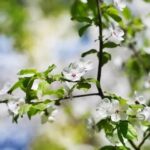A well-designed backyard landscape can greatly enhance the overall aesthetic appeal of a home, creating a beautiful outdoor space for relaxation and entertainment. Whether you have a spacious lawn or a small outdoor area, there are numerous backyard landscape ideas that can transform your space into a stunning retreat. From lush greenery to carefully curated hardscape elements, there are many ways to design a backyard that suits your style and needs in harmony with the surrounding environment.
Creating the perfect backyard landscape starts with thoughtful planning and design. It’s important to consider factors such as the available space, local climate, and desired layout to ensure that the end result is both visually appealing and functional. In addition to plant selection and hardscape elements, features such as water elements and outdoor lighting can further elevate the beauty and tranquility of the space. Finally, ongoing maintenance is essential for keeping your backyard landscape looking its best year-round.
In this article, we will explore the various aspects of designing a backyard landscape, from initial planning and plant selection to hardscape elements, water features, lighting, maintenance, and budget-friendly ideas. Whether you’re starting from scratch or looking for ways to refresh your existing outdoor space, these valuable tips and suggestions will help you create a backyard landscape that complements your home while providing a peaceful escape right outside your door.
Planning and Design
When planning and designing a backyard landscape, it is essential to consider the initial steps in order to create a space that is not only beautiful but also functional. These steps include identifying the available space, taking into account the climate of the region, and creating a design layout that suits both the homeowner’s needs and the natural environment.
Identifying the available space involves taking accurate measurements of the backyard area and considering any existing features such as trees, slopes, or utility lines. This step is crucial in determining what can realistically be accomplished within the space and allows for proper planning and allocation of resources.
Considering the climate of the region is another important factor in planning a backyard landscape. Different climates will require different approaches to plant selection and design elements. For example, arid climates may necessitate drought-resistant plants, while areas with harsh winters might require special consideration for hardscape materials that can withstand freezing temperatures.
Creating a design layout involves sketching out a plan for how the backyard landscape will be arranged. This includes deciding on the placement of features such as flower beds, seating areas, pathways, and any hardscape elements.
It is also an opportunity to incorporate any specific backyard landscape ideas or themes that are desired by the homeowner. With these initial steps successfully completed, homeowners can continue on to carefully choosing appropriate plants, hardscape elements such as patios and walkways, water features or lighting options to enhance their backyard landscape.ideas.
Plant Selection
Selecting the right plants for your backyard landscape is crucial in creating a beautiful and thriving outdoor environment. When choosing plants, it’s important to consider factors such as your local climate, the amount of sunlight and shade in your yard, and the specific needs of each plant variety.
When it comes to flowering plants, options such as roses, hydrangeas, and lilies can add vibrant pops of color to your backyard landscape. These flowers come in various sizes and colors, allowing you to create floral arrangements that complement your overall design aesthetic. Additionally, incorporating native flowering plants can help support local pollinators and wildlife in your area.
Shrubs are another essential component of a well-planned backyard landscape. Options like boxwoods, holly bushes, and junipers can provide structure and texture to your outdoor space while serving as natural privacy screens or windbreaks. Consider the mature size of shrubs when planting them to ensure they have ample room to grow without overcrowding other elements in your landscape.
Trees play a significant role in any backyard landscape by providing shade, visual interest, and even seasonal fruit or flowers. Popular tree varieties for landscaping purposes include maple trees, ornamental cherry trees, and evergreen conifers. It’s essential to research the growth habits of trees before planting them to prevent potential conflicts with underground utilities or nearby structures.
| Types of Plants | Tips for Selection |
|---|---|
| Flowering Plants | Consider color schemes and maintenance needs when selecting flowering plants for your backyard landscape. |
| Shrubs | Choose shrubs that fit the available space while considering their growth habits throughout each season. |
| Trees | Evaluate the mature size of trees when planning their placement in your backyard make sure they have enough space. |
Hardscape Elements
When planning your backyard landscape, incorporating hardscape elements is an essential aspect of the overall design. Patios, walkways, and outdoor seating areas not only add functionality to the space but also contribute to its aesthetic appeal. Integrating these features into your landscape requires thoughtful planning and design to ensure they complement the natural surroundings while serving their intended purposes.
One of the key considerations when adding hardscape elements to your backyard landscape is to create a seamless transition between the built environment and the natural environment. This can be achieved by choosing materials that blend well with the existing elements of the space, such as the exterior of your home or surrounding vegetation. For example, using natural stone or pavers for walkways and patios can create a harmonious connection with the surrounding plants and trees.
Another important factor to consider when incorporating hardscape elements is functionality. When designing outdoor seating areas or patios, it’s crucial to think about how these spaces will be used. Will you be entertaining guests frequently? Do you need a designated dining area? Understanding how you intend to use these features will help determine their layout, size, and placement within your backyard landscape.
In addition to patios and walkways, other hardscape elements such as retaining walls, fire pits, and built-in planters can add depth and visual interest to your backyard landscape. By carefully integrating these features into your design, you can create a dynamic outdoor space that enhances the overall beauty of your property.
| Hardscape Element | Consideration |
|---|---|
| Patios & Walkways | Choose materials that blend with surroundings |
| Outdoor Seating Areas | Determine how you intend to use the space |
| Retaining Walls & Fire Pits | Add depth and visual interest to landscape |
Water Features
When it comes to enhancing the beauty and tranquility of a backyard landscape, the addition of water features can make a significant impact. Whether it’s a small pond, a stunning fountain, or a cascading waterfall, these elements can add visual appeal as well as create a sense of calm and serenity in your outdoor space. Here are some ideas for incorporating water features into your backyard landscape:
- Ponds: A pond can become the focal point of your backyard, attracting wildlife and providing a soothing atmosphere. Consider adding aquatic plants and fish to create a natural and serene environment.
- Fountains: Whether it’s a classic tiered fountain or a modern sculpture-like design, fountains add an elegant touch to any backyard landscape. The sound of flowing water can also help mask unwanted noise from nearby streets or neighbors.
- Waterfalls: For those looking to make a dramatic statement, waterfalls can be a stunning addition to the landscape. Incorporating natural stone elements and carefully planned landscaping around the waterfall can create an oasis-like feel.
In addition to their aesthetic value, water features also have practical benefits for your backyard landscape. They can attract birds and other wildlife, promote relaxation, and even help to cool down the surrounding area during hot summer months. With proper planning and installation, adding a water feature to your backyard landscape is sure to elevate its overall appeal.
Careful attention should be paid to the location and size of the water feature in order for it to complement the existing landscaping without overpowering it. Additionally, maintenance is key in keeping these features looking their best – regular cleaning, monitoring of water levels, balancing chemicals (if applicable), and winterizing if you live in a cold climate will ensure that your water feature remains an integral part of your backyard oasis for many years to come.
Lighting
When it comes to creating a well-designed backyard landscape, outdoor lighting plays a crucial role in extending the usability of the space and enhancing its overall aesthetic appeal. By strategically incorporating different types of lighting, you can create ambiance, highlight key features of the landscape, and ensure that your outdoor area remains functional even after sunset.
Types of Outdoor Lighting
There are various types of outdoor lighting that you can incorporate into your backyard landscape. One popular option is overhead string lights, which can be hung between trees or along a patio cover to create a cozy and inviting atmosphere.
Another option is pathway lighting, which not only adds safety by illuminating walkways but also adds visual interest to the landscape at night. Additionally, spotlights can be used to highlight specific architectural or landscaping elements such as trees, sculptures, or water features.
Creating Ambiance
To create ambiance in your backyard landscape, consider using warm-toned bulbs for a soft and inviting glow. You can also incorporate dimmer switches or smart lighting systems to adjust the intensity of the light based on the desired mood. Candles and lanterns are another way to add ambiance to an outdoor space, providing a romantic and charming atmosphere for evening gatherings.
Highlighting Key Features
Outdoor lighting can be used to showcase the unique features of your backyard landscape. Whether it’s an eye-catching tree, a beautiful flower bed, or a decorative water feature, strategically placed lighting can draw attention to these elements and create visual focal points in the landscape. By using uplighting from below or downlighting from above, you can accentuate these key features and make them stand out in the nighttime environment.
Incorporating thoughtful outdoor lighting into your backyard landscape not only enhances its beauty but also extends its functionality well into the evening hours. With careful planning and strategic placement of different types of lighting fixtures, you can create an inviting and visually stunning outdoor space that can be enjoyed day or night.
Maintenance and Care
Maintaining a beautiful backyard landscape requires ongoing care and attention to ensure that the plants and hardscape elements continue to thrive. Proper maintenance not only keeps the space looking its best but also helps to preserve its overall health and longevity. Here are some essential tips for ongoing maintenance and care of your backyard landscape:
- Watering: Determine the specific watering needs of your plants based on their type, size, and placement within the landscape. Consider installing a drip irrigation system to provide consistent moisture while conserving water. Be mindful of weather patterns and adjust your watering schedule accordingly to accommodate for rainfall or drought conditions.
- Pruning: Regular pruning is essential for promoting healthy growth, controlling the shape and size of plants, and removing dead or diseased foliage. Use sharp, clean tools to avoid damaging plant tissue, and be sure to prune at the appropriate times of year based on each plant’s individual growth cycle.
- Fertilizing: Feed your plants with a balanced fertilizer according to their specific nutritional requirements. Consider organic options for a more environmentally-friendly approach, and apply fertilizers sparingly to avoid overfeeding, which can cause excessive growth or damage to roots.
- Controlling Pests and Weeds: Keep an eye out for common pests that may affect your plants and take preventive measures such as using insecticidal soaps or natural predators. Implement mulching around plants to help suppress weed growth and minimize competition for nutrients.
Incorporating these maintenance practices into your regular routine will help preserve the beauty of your backyard landscape while ensuring that it remains a thriving outdoor oasis for relaxation and enjoyment. By taking proactive steps to care for your plants and hardscape elements, you can continue to enjoy a stunning landscape that enhances the overall appeal of your home.
Budget-Friendly Ideas
In conclusion, creating a well-designed backyard landscape can significantly improve the overall aesthetic appeal of a home. By carefully planning and designing the space, selecting suitable plants, incorporating hardscape elements and water features, and utilizing outdoor lighting, homeowners can transform their backyard into a beautiful retreat for relaxation and entertainment. Additionally, proper maintenance and care are essential for preserving the beauty of the landscape over time.
When it comes to budget-friendly ideas for enhancing a backyard landscape, there are numerous cost-effective options to consider. DIY projects using repurposed materials can add unique charm to the space while keeping expenses low. Additionally, choosing low-maintenance plants can reduce ongoing care costs while still adding greenery and color to the landscape.
Ultimately, with careful consideration of design choices and a focus on cost-effective solutions, homeowners can achieve a beautiful backyard landscape without breaking the bank. Whether through DIY projects or strategic plant selection, there are plenty of opportunities to create an inviting outdoor space that adds value to the home without excessive financial investment. By incorporating these budget-friendly ideas, homeowners can enjoy a stunning backyard landscape that enhances their living environment for years to come.
Frequently Asked Questions
How Do I Landscape My Backyard on a Budget?
Landscaping your backyard on a budget can be done by focusing on low-cost hardscaping elements such as gravel or mulch, and incorporating affordable plants such as native species or perennials. You can also consider DIY projects like building a simple wooden deck or installing a small water feature to add visual interest without breaking the bank.
What Is the Least Expensive Backyard Landscaping?
The least expensive backyard landscaping options often involve minimal materials and labor. For example, using mulch, gravel, or ground cover plants for large areas instead of pricey sod or elaborate plantings can keep costs down. Incorporating repurposed or recycled materials, such as old tires or pallets, for garden borders or furniture can also create an inexpensive but unique backyard landscape.
What Is the Cheapest Landscape Fill?
When it comes to cheap landscape fill, using fill dirt is often the most affordable option. It is commonly used to create gradual slopes or build up landscapes before planting. Additionally, sourcing topsoil from local suppliers rather than buying bags at retail prices can help cut costs when filling in low spots in your yard or preparing garden beds.

Welcome to my gardening blog! I am passionate about plants and enjoy sharing my knowledge and experiences with others. In this blog, I will write about everything related to gardening, from tips on how to get started to updates on my own garden projects.





